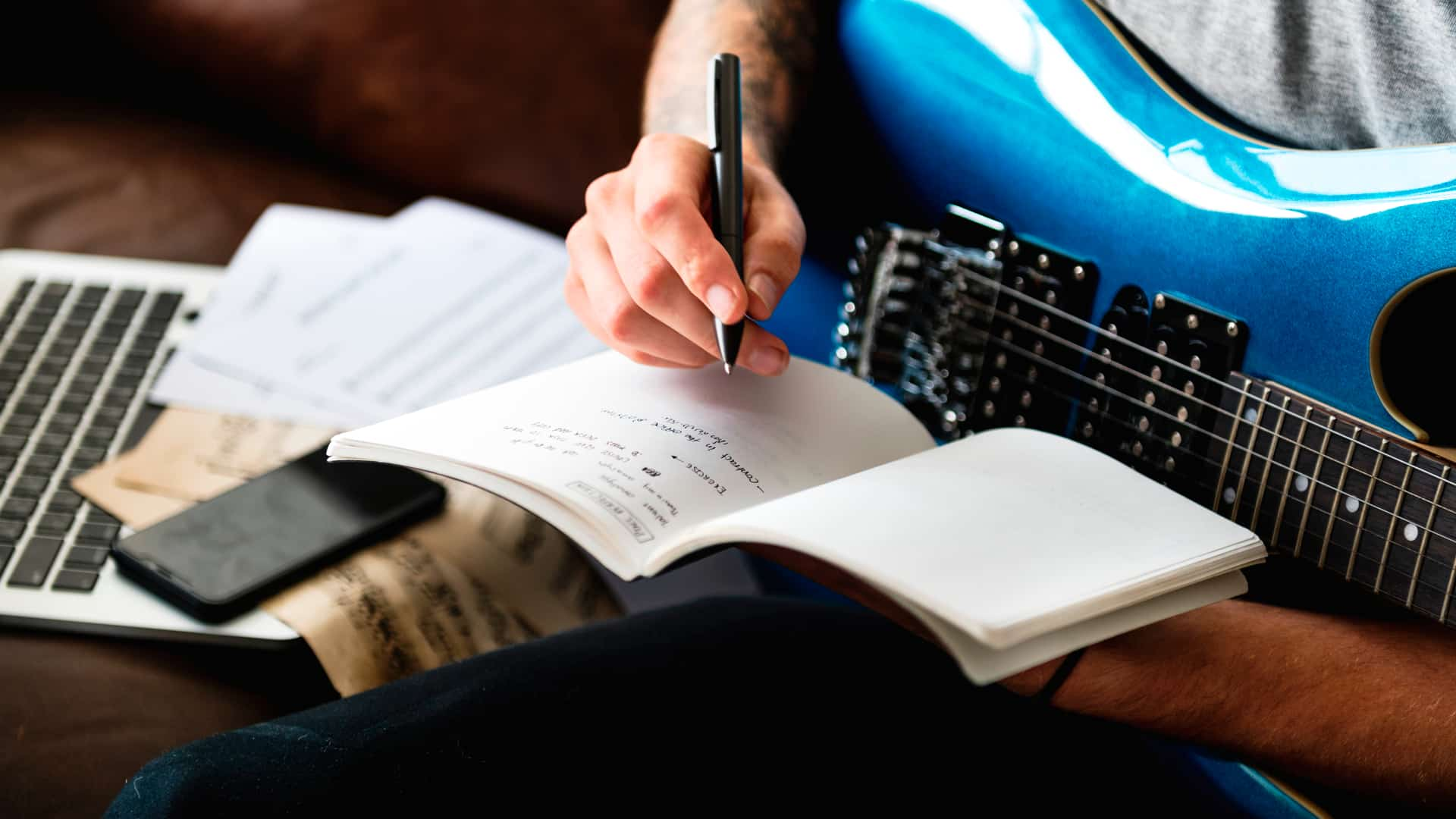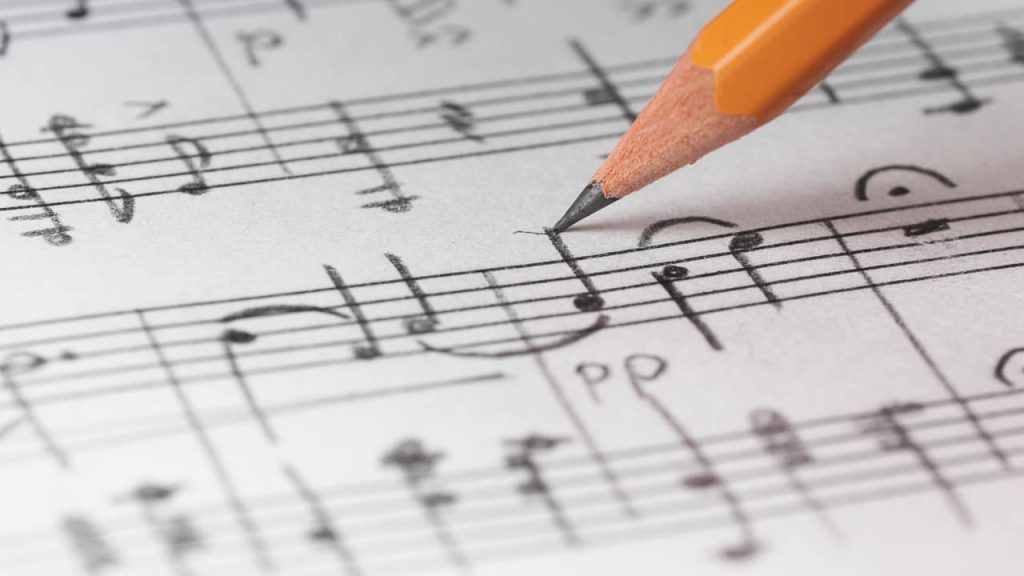
How to compose a song step by step
In this post you will find a step-by-step guide on how to compose a song and avoid creative blocks. Without a doubt, composition is one of the most demanding areas of music, as it involves taking control of many elements at once. Rhythm, melody, harmony, timbre, texture, form… And these are just a few aspects to take into account.
Therefore, some musicians may get stuck at some stage of the process. But don’t worry, it’s completely normal. As you may already know, there is no magic formula for songwriting. However, following a method and letting yourself be guided by a few steps will help you establish a more organized work process and enjoy all its parts.
If you think about it, all creative processes work in a similar way. When you are looking for new ideas for songwriting the first thing you do is soak in notes, melodies, rhythms… Even consume any kind of art that is not related to your discipline. Then you let those thoughts rest for a few days so your brain can work and create connections with all that information. And then comes the Eureka! phase, when you’ve reached certain conclusions and come up with a brilliant idea.
It may seem that this idea has come out of nowhere, but in reality there is a method behind it and a working process. So here’s how to write a song and what steps to follow.
What do you need to start writing songs?
Before you start writing songs, we suggest you reflect on these 3 aspects:
The instrument
Although a song is a combination of several instruments, it is recommended to start composing by playing only one. Stringed instruments, such as guitar or piano, are the most commonly used for these first stages of creation, but you can play whatever you prefer. For example, you can start with a drum kit or a synthesizer. The best thing is that you feel completely comfortable with the instrument and that you flow with it.

The theme and lyrics
Another important decision before creating a song is the theme it will deal with: love, life, sadness, anger… It must be an argument that we can question and that transmits a series of emotions. We can think of a very general theme and then go deeper.
Then, we will think if the song will have lyrics or not. But we will not start writing it, this will come later (if there are any). In this way we establish if we are going to express the theme through words and instruments, or only with sounds.
The emotions
Now that you have an instrument, you’ve thought of a theme and you know if your song will have lyrics or not, it’s time to ask yourself what emotions you want to convey.
Thinking about this before making a song is essential because it will help you write the lyrics, if there are any, and capture those emotions through certain sounds. For example, how do I convey the despair felt after a breakup? If you ask yourself these kinds of questions, some very specific sounds will surely come to mind.
How to write the lyrics of a song
At this point you will have decided whether your song has lyrics or not. If it doesn’t, you can go directly to the next step. If it does, here are some tips on how to write lyrics for a song:
1. Write what you feel
You already have a theme in mind, so write down any ideas or phrases that come to mind. You don’t have to follow any structure, just write. Afterwards, you can discard the phrases you like the least or combine some with others.
2. Lean on your instrument
Some musicians do very well to rely on their main instrument during this process. So let yourself go and flow with it. In between notes you may get a good idea.
3. Don’t force yourself
Don’t force yourself to write expecting to come up with the lyrics of a big hit right away. We are in the preliminary phase, so just relax and write in a natural and human way. Then you’ll work out the structure and whatever else is necessary.
Steps to compose a song
Before you start composing music, you should know that there is no single formula. In fact, each composer could give you some guidelines and all of them would be valid. The important thing is for everyone to try and find the method that works best for them. However, whether you are a beginner or an experienced musician, this guide to composing songs in 6 steps will be very useful. Let’s get started!
Step 1. The first draft
We start with the music production. The first thing is to create a starting point, a first draft, so grab your instrument and start playing. Improvise and have fun with different chords and combinations. Don’t go for the whole song, just play and do some recording.
It is not at all advisable to try to compose part by part immediately. It is best to listen to the material you have at the end of the recording day and extract the best ideas. This first step could be summarized as: improvisation, sketches and recordings.
Step 2: The idea
You’ve already been improvising and gathering some ideas in the recording studio, so it’s time to brainstorm. For this, it will be very useful to go through your drafts and listen to your recordings again. Analyze them and try to extract a general concept or idea.
If you feel stuck, you can get inspiration from reading or watching movies. You already have a lot of thoughts in your head, so being in contact with other works will help you to transform those ideas that are in your head, for example into a chorus, a melody, a verse, etc.

Step 3: The structure
The structure of your song will usually consist of 3 parts: verse, chorus and bridge. Think of each of these as building blocks that will help you construct your piece.
Verse
This is the main part of your song, the one that propels it forward. The melody over the verse is usually ascending and usually varies a little each time it appears in the song.
Chorus
The chorus is the part of the song that is repeated several times, so it has to be memorable and catchy. This is what is known as the “chorus” and usually appears after the verse.
Bridge
This is the part that uses a different melody or chords to contrast with the rest of the song. This resource is usually placed between a chorus and a verse to take the original idea to a different point.
In addition to these 3 parts, there are 3 other elements of basic music theory that you need to pay attention to: the key, the melody and the hook.
Clef or key
It serves to define the range of notes with which you are going to write your song. We refer to melodies, chords, even all the notes that form the same scale.
Melody
It is the sequence of notes that will form the main line of the song. Depending on the musical genre in which you move, this can take many forms.
Hook
This is the part that the listener will remember the most. Hooks are usually short melodic passages, such as a solo part or chorus lyrics, that make the song catchy.
Step 4: Building on the idea
It’s time to turn your draft into a well-structured song. Depending on what you are composing, you will combine the parts we just saw (verse, chorus, bridge, key or tone, melody and hook), to create the final structure of your song. This will vary depending on the musical genre and the creativity of each composer.
Structuring a song is based on arranging well all the elements that we have created separately. It’s time to put this phrase here, this chorus there, and so on.
Step 5. Finish the song
You already have the main idea well fixed and you know what structure fits best with your song. Now you have to give it your personal touch, that characteristic mark of each composer. And the best way to do this is to follow your own process. You can listen to the song as a whole, play the audio tracks separately… Here each author has his or her own preferences.
Step 6. Registration of the song
Finally, after all this process, the only thing left to do is to register the song. A fundamental step to prove the authorship of the work and protect your rights as a composer. You can register songs in just a few minutes and online through Safe Creative.
